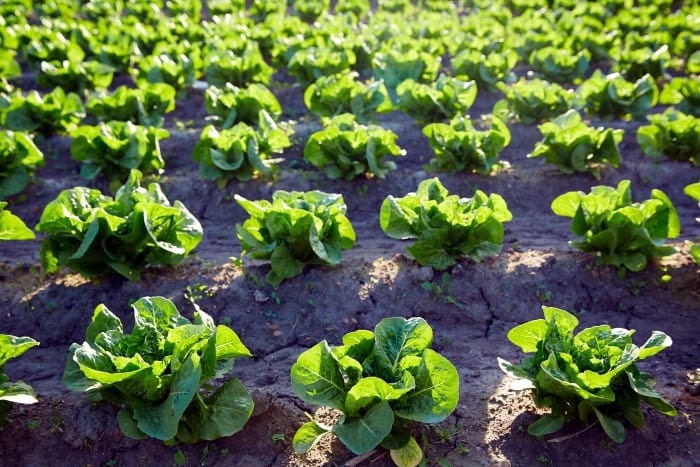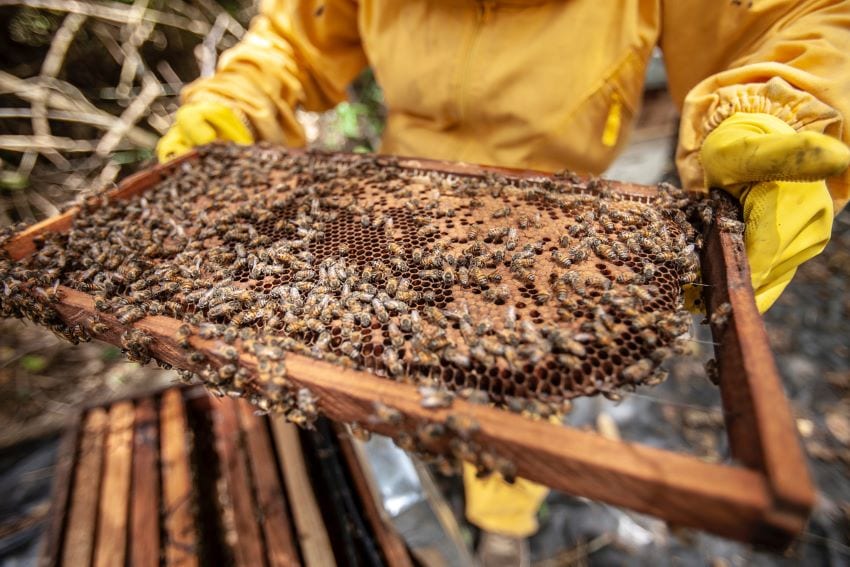
Click here to download the FAQs on the effects of ash fall on crop production.
Following the recent eruptions of La Soufriere volcano in St. Vincent and the Grenadines, the Barbados Agricultural Development and Marketing Corporation (BADMC) prepared a number of FAQs to help farmers better understand and address the effects of ash fall on their fruit and vegetables.
Although volcanic ash is considered toxic and abrasive, crop farmers can realise benefits once they understand its composition and application.
Q: Is volcanic ash harmful to my crops?
A: Yes. Volcanic ash contains sulphur and other toxic elements, which can be quite acidic and cause a ‘burning effect’ to the crops. Steady ash fall on a plant can cause damage to the stems and leaves due to the weight of the ash. The ash cover will also reduce the ability of plants to carry out photosynthesis (process of making food for the plant) and may lead to phytotoxicty, just in the same way if you place too much fertiliser too close to plants. Small seedlings or young transplants can suffer greatly if the plants are buried.
Q: How do I remove ash from the stems and leaves of my crops?
A: Use a clean mist blower or a motorised spray can to remove ash from crops. Direct the nozzle downwards and blow ash towards the soil and not into the air. Use water to frequently wash away ash build up from the leaves and stems. The use of irrigation (overhead) through mini-sprinklers or guns can also be beneficial. On lawns, gentle watering followed by aeration will allow the ash to move more freely into the soil.
Q: How do I protect myself against the volcanic ash while out in my fields?

A: Volcanic ash can be very abrasive and may irritate the skin. Wear safety eyewear/face shield and masks when outdoors. Protect skin with long sleeved shirts and long pants, as well as other personal protective equipment, such as overalls and boots.
Q: How can I ensure I am visible during periods of ash fall or low light conditions?
A: Wear reflective, high visibility and/or bright coloured clothing during these periods. For example, flourescent green, orange, yellow, etc.
Q: How do I protect my irrigation pump and other equipment from ash damage?
A: Frequently inspect pumps and motors for ash residue. Remove ash where possible with a soft brush and vacuum. Clean filters or replace when necessary.
Q: Can I harvest my crops after an ash fall?
A: Yes. However, use a mist blower to blow ash off of vegetables and fruit. Wash harvested produce thoroughly and allow to air dry. Use a soft microfiber cloth to remove any excess ash, and ensure there is no ash damage to the harvested crop before delivery or sale.
Q: How can I protect my leafy vegetables, such as lettuces, cabbages and kale, from the effects of the ash?
A: Wash leafy vegetables thoroughly with clean water and allow to dry. You may also dunk leafy vegetables upside down in buckets of water or large containers to allow ash to drain adequately from the leaves.

Q: Can the volcanic ash be added to my soils to improve fertility?
A: Volcanic ash contains several micro and macro nutrients, which, when incorporated into our soils, can improve their fertility profile, due to the acidic nature of the ash. This can lead to an increase in the pH of our soils, which are predominantly alkaline due to its calcareous nature. Benefits include the movement or uptake of certain nutrients along with enhanced growth, since most plants prefer a slightly acidic to neutral pH (6.5-7.5). If the ash is very fine, it is able to quickly break down and increase the overall productive potential of the soil. Preferably, you should mix the ash into your soils rather than leave it on the surface.
Q: How do I minimise the effects of the volcanic ash on my bee hives?
A: Relocate your hives to an area free of, or with minimal ash. If this is not possible, discourage foraging on contaminated flowers by reducing or sealing hive entrances and providing supplemental nutrition in the form of sugar water and protein supplements. However, this should be considered as a temporary solution, and moving colonies to less impacted areas should be the priority.
Q: Who should crop farmers contact for further information?
A: Crop farmers may call the Extension Services Department of the BADMC at: 535-6852, 535-6855, 535-6858. They may send email queries to the Chief Extension Officer at: leslie.sealy@badmc.org.
Barbados Agricultural Development and Marketing Corporation (BADMC)
